Growing Leeks at Home might seem intimidating, but trust me, it’s easier than you think! Imagine stepping outside your back door and snipping fresh, flavorful leeks to add to your favorite soup or stew. That’s the magic of home gardening, and with a few simple tricks, you can enjoy the delicious rewards of your own leek patch.
Leeks have a rich history, dating back to ancient Egypt, where they were prized for their culinary and medicinal properties. The Romans, known for their sophisticated cuisine, also embraced leeks, spreading their cultivation throughout Europe. Today, leeks remain a staple in many cuisines, adding a delicate onion-like flavor to dishes around the world.
But why bother growing leeks at home when you can buy them at the store? Well, for starters, homegrown leeks taste infinitely better! They’re fresher, more flavorful, and free from the pesticides often used in commercial farming. Plus, gardening is a fantastic way to relieve stress, connect with nature, and enjoy the satisfaction of nurturing something from seed to harvest. In this article, I’m going to share some easy DIY tricks and hacks that will help you successfully grow leeks at home, even if you’re a complete beginner. Get ready to unleash your inner gardener and enjoy the delicious taste of homegrown leeks!
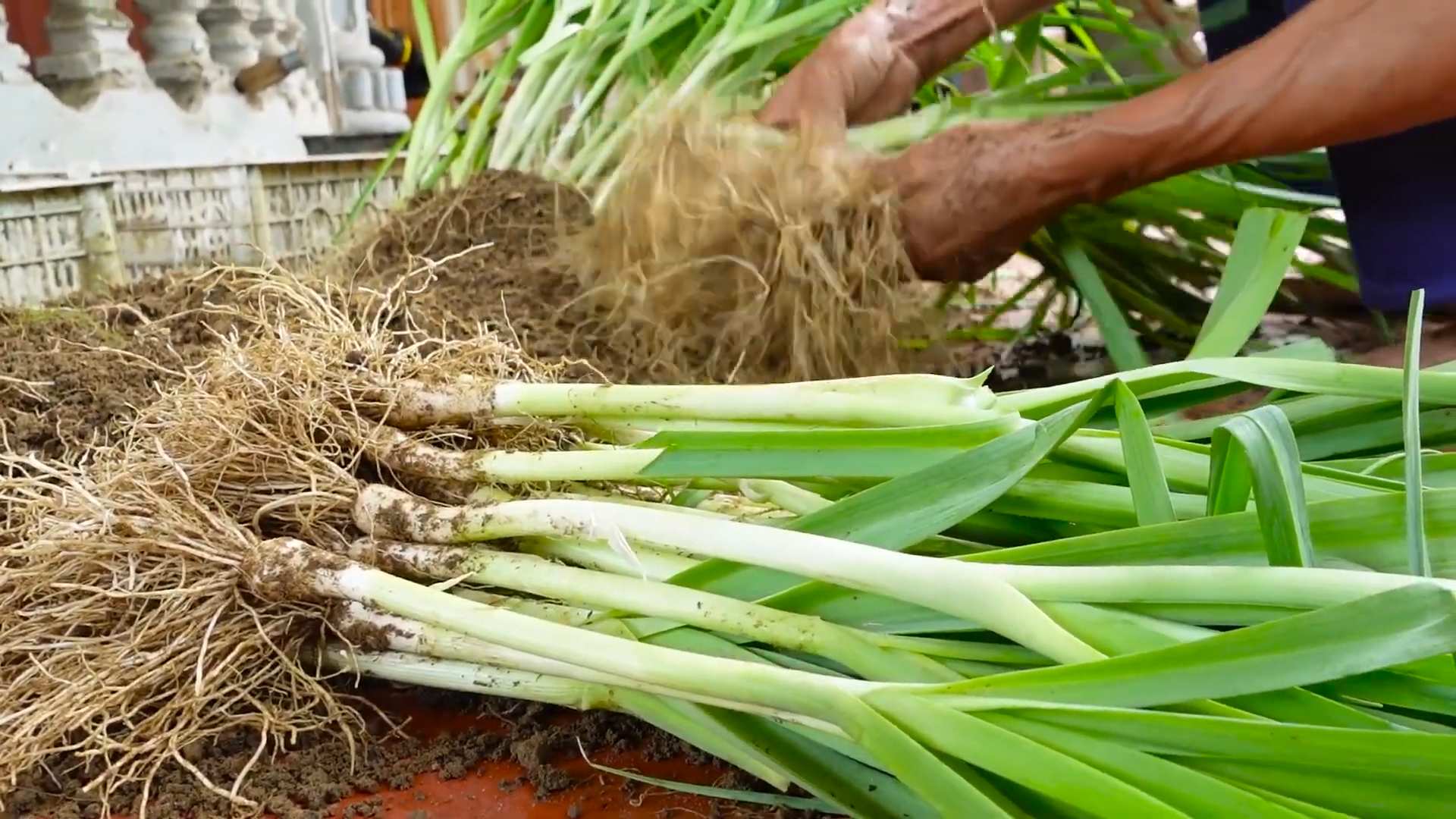
Growing Leeks at Home: A Beginner’s Guide
Okay, so you want to grow leeks at home? Awesome! Leeks are surprisingly easy to cultivate, and nothing beats the flavor of homegrown veggies. Plus, they’re super versatile in the kitchen. I’m going to walk you through everything you need to know, from starting seeds to harvesting your delicious leeks. Let’s get started!
Choosing Your Leek Variety
First things first, let’s talk about leek varieties. There are a bunch to choose from, and the best one for you will depend on your climate and when you want to harvest. Here are a few popular options:
* ‘American Flag’: A reliable and widely grown variety, known for its long, thick shanks. It’s a good all-around choice.
* ‘Giant Musselburgh’: As the name suggests, this one gets big! It’s a hardy variety that’s great for overwintering in milder climates.
* ‘Bandit’: A relatively early variety, perfect if you want to harvest your leeks sooner rather than later.
* ‘King Richard’: Another early variety, known for its mild flavor and long, slender shanks.
I usually go with ‘American Flag’ because it’s dependable and produces a good yield. But feel free to experiment and find what works best for you!
Starting Leek Seeds Indoors
Leeks have a long growing season, so starting them indoors is usually the way to go, especially if you live in a colder climate. I typically start my seeds about 8-10 weeks before the last expected frost.
Here’s what you’ll need:
* Leek seeds (obviously!)
* Seed starting trays or small pots
* Seed starting mix (this is important – regular potting soil can be too heavy)
* A spray bottle filled with water
* A warm, sunny spot or a grow light
Now, let’s get planting!
1. Prepare your seed starting trays: Fill your trays or pots with seed starting mix, leaving about half an inch of space at the top. Gently tap the trays to settle the mix.
2. Sow the seeds: Sprinkle a few seeds (2-3) into each cell or pot. You don’t need to bury them too deep – about ¼ inch is perfect.
3. Water gently: Use your spray bottle to mist the soil. You want it to be moist, but not soggy.
4. Provide warmth and light: Place your trays in a warm, sunny spot, like a south-facing windowsill. If you don’t have enough natural light, use a grow light. Keep the light on for about 14-16 hours a day.
5. Keep the soil moist: Check the soil daily and mist it with water whenever it feels dry to the touch.
6. Thin the seedlings: Once the seedlings have a few true leaves (the second set of leaves that appear), thin them out so that only one strong seedling remains in each cell or pot. I know it’s hard to do, but it’s necessary for healthy growth!
Hardening Off Your Leek Seedlings
Before you transplant your leek seedlings outdoors, you need to “harden them off.” This process gradually acclimates them to the outdoor environment, preventing shock and helping them thrive.
1. Start a week or two before transplanting: Begin by placing your seedlings outdoors in a sheltered spot for just an hour or two each day.
2. Gradually increase the time: Each day, increase the amount of time the seedlings spend outdoors by an hour or two.
3. Protect from harsh conditions: If the weather is particularly windy, rainy, or sunny, bring the seedlings back indoors.
4. By the end of the week: Your seedlings should be able to tolerate a full day outdoors.
Transplanting Leek Seedlings Outdoors
Now for the fun part – planting your leeks in the garden!
Here’s what you’ll need:
* Your hardened-off leek seedlings
* A garden trowel or spade
* Well-draining soil amended with compost or aged manure
* A watering can or hose
* Mulch (optional)
1. Prepare the soil: Leeks prefer well-draining soil that’s rich in organic matter. Amend your soil with compost or aged manure before planting.
2. Create trenches or holes: There are two main methods for planting leeks: trenching and hole planting.
* Trenching: Dig trenches that are about 6-8 inches deep and 6 inches wide. Space the trenches about 12 inches apart.
* Hole Planting: Dig individual holes that are about 6-8 inches deep and 4-6 inches wide. Space the holes about 6 inches apart in rows that are 12 inches apart.
I personally prefer trenching because it makes it easier to blanch the leeks (more on that later).
3. Plant the seedlings: Gently remove the seedlings from their trays or pots. Carefully separate the roots and place one seedling in each trench or hole.
4. Backfill with soil: If you’re using the trenching method, gradually backfill the trenches with soil as the leeks grow. This will blanch the shanks, making them whiter and milder in flavor. If you’re using the hole planting method, simply backfill the holes with soil, leaving the top inch or two of the seedlings exposed.
5. Water thoroughly: Water the newly transplanted seedlings thoroughly.
6. Mulch (optional): Apply a layer of mulch around the leeks to help retain moisture, suppress weeds, and regulate soil temperature.
Caring for Your Leeks
Leeks are relatively low-maintenance, but here are a few things you can do to keep them happy and healthy:
* Water regularly: Leeks need consistent moisture, especially during dry periods. Water deeply whenever the soil feels dry to the touch.
* Weed regularly: Keep the area around your leeks free of weeds, which can compete for nutrients and water.
* Fertilize (optional): If your soil is poor, you can fertilize your leeks with a balanced fertilizer every few weeks.
* Blanching (optional): As I mentioned earlier, blanching the leeks will make their shanks whiter and milder in flavor. To blanch, simply hill up the soil around the shanks as they grow. You can also use cardboard tubes or other materials to block out the light.
Dealing with Pests and Diseases
Leeks are generally resistant to pests and diseases, but here are a few things to watch out for:
* Onion thrips: These tiny insects can suck the sap from leek leaves, causing them to become silvery and distorted. You can control thrips with insecticidal soap or neem oil.
* Leek moth: The larvae of this moth can tunnel into leek leaves and stems, causing damage. You can prevent leek moth infestations by covering your leeks with row covers.
* White rot: This fungal disease can cause leeks to rot from the base up. To prevent white rot, avoid planting leeks in the same spot year after year and ensure good soil drainage.
Harvesting Your Leeks
You can harvest leeks whenever they reach a size that you’re happy with. I usually start harvesting mine when they’re about an inch in diameter.
1. Loosen the soil: Use a garden fork or trowel to loosen the soil around the leeks.
2. Gently pull them up: Grasp the leeks near the base and gently pull them up.
3. Trim the roots and leaves: Trim off the roots and the top portion of the leaves.
4. Wash and enjoy: Wash the leeks thoroughly to remove any dirt and enjoy them in your favorite recipes!
Storing Your Leeks
Freshly harvested leeks can be stored in the refrigerator for up to two weeks. To store them, wrap them loosely in plastic wrap or place them in a plastic bag. You can also freeze leeks for longer storage. To freeze them, blanch them for a few minutes, then cool them in ice water. Drain them well and store them in freezer bags.
Enjoying Your Homegrown Leeks
Now that you’ve grown your own leeks, it’s time to enjoy them! Leeks are incredibly versatile and can be used in a wide variety of dishes. Here are a few of my favorite ways to use them:
* Leek and potato soup: A classic comfort food that’s perfect for a chilly day.
* Leek quiche: A delicious and elegant dish that’s perfect for brunch or lunch.
* Grilled leeks: A simple and flavorful side dish that’s perfect for summer barbecues.
* Leek and mushroom risotto: A creamy and decadent dish
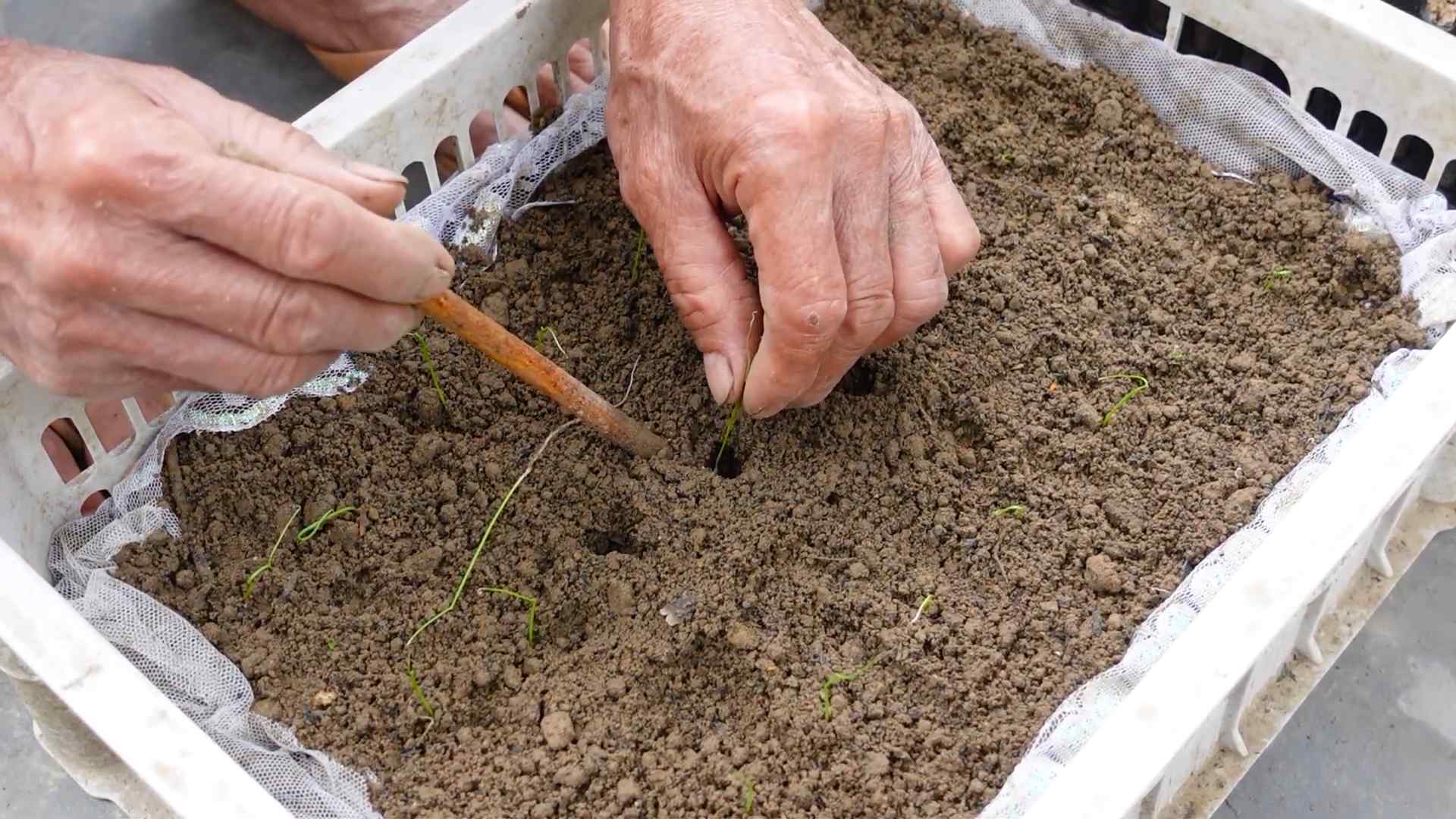
Conclusion
So, there you have it! Growing leeks at home isn’t just a gardening project; it’s an investment in flavor, freshness, and a more sustainable lifestyle. We’ve walked you through the process, from seed to harvest, and hopefully demystified any concerns you might have had. The beauty of this DIY trick lies in its simplicity and adaptability. You don’t need acres of land or a green thumb of mythical proportions to enjoy the satisfaction of pulling your own, perfectly grown leeks from the earth.
Why is this a must-try? Because store-bought leeks simply can’t compare to the vibrant taste and texture of homegrown ones. You control the growing conditions, ensuring they are free from unwanted pesticides and herbicides. Plus, the sheer joy of nurturing a plant from a tiny seed to a culinary delight is an experience that’s hard to beat. Imagine the pride you’ll feel when you incorporate your own leeks into a comforting potato and leek soup on a chilly evening, or when you impress your guests with a sophisticated leek and goat cheese tart.
But the benefits extend beyond the kitchen. Gardening is a fantastic way to relieve stress, connect with nature, and get some much-needed fresh air and sunshine. Growing your own leeks is a small step towards a more self-sufficient and environmentally conscious way of living.
Looking for variations? Consider companion planting! Leeks thrive alongside carrots, onions, and celery, creating a mutually beneficial ecosystem in your garden. You can also experiment with different varieties of leeks, from the mild and delicate ‘Bandit’ to the robust and flavorful ‘Giant Musselburgh’. For those with limited space, growing leeks in containers is a perfectly viable option. Just ensure you choose a large enough pot and provide adequate drainage.
Don’t be afraid to experiment with different planting times to extend your harvest season. Succession planting, where you sow seeds every few weeks, will ensure a continuous supply of fresh leeks throughout the year. And remember, even if you encounter a few challenges along the way, don’t give up! Gardening is a learning process, and every mistake is an opportunity to grow (pun intended!).
We wholeheartedly encourage you to give this DIY trick a try. Start small, be patient, and most importantly, have fun! Once you’ve experienced the satisfaction of growing your own leeks, you’ll never look at store-bought ones the same way again.
We’d love to hear about your experiences! Share your photos, tips, and stories in the comments below. Let’s build a community of home gardeners and inspire others to embrace the joys of growing their own food. Happy gardening!
Frequently Asked Questions (FAQ)
What is the best time of year to plant leeks?
The best time to plant leeks depends on your climate. In general, leeks are a cool-season crop, so they thrive in spring and fall. For a spring harvest, start seeds indoors 8-10 weeks before the last expected frost. Transplant them outdoors once the soil has warmed up and the risk of frost has passed. For a fall or winter harvest, sow seeds directly into the ground in late spring or early summer. In warmer climates, you can plant leeks in the fall for a winter harvest. The key is to provide them with consistent moisture and protection from extreme temperatures.
How much sun do leeks need?
Leeks need at least 6 hours of sunlight per day to thrive. Choose a location in your garden that receives full sun for optimal growth. If you live in a particularly hot climate, some afternoon shade can be beneficial to prevent the leeks from bolting (going to seed prematurely).
What kind of soil is best for growing leeks?
Leeks prefer well-drained, fertile soil that is rich in organic matter. Amend your soil with compost or well-rotted manure before planting to improve its structure and nutrient content. A slightly acidic to neutral soil pH (around 6.0 to 7.0) is ideal. If your soil is heavy clay, consider adding sand or perlite to improve drainage.
How often should I water my leeks?
Leeks need consistent moisture, especially during the early stages of growth. Water deeply and regularly, ensuring that the soil remains consistently moist but not waterlogged. Avoid overhead watering, as this can increase the risk of fungal diseases. Mulching around the leeks can help to retain moisture and suppress weeds.
How do I blanch leeks to get the white stem?
Blanching is the process of excluding light from the lower part of the leek stem to make it white and tender. There are several ways to blanch leeks. One method is to hill up soil around the stems as they grow. Another option is to use cardboard tubes or plastic pipes to cover the stems, leaving the tops exposed. You can also plant leeks in trenches and gradually fill them in with soil as the plants grow. Blanching typically takes several weeks, so start the process when the leeks are about half their mature size.
What are some common pests and diseases that affect leeks?
Leeks can be susceptible to several pests and diseases, including onion thrips, leek moths, and white rot. Onion thrips are tiny insects that can damage the leaves, causing them to become silvery and distorted. Leek moths are caterpillars that bore into the stems, causing significant damage. White rot is a fungal disease that can cause the roots and bulbs to rot. To prevent these problems, practice good garden hygiene, such as removing plant debris and rotating crops. You can also use organic pest control methods, such as insecticidal soap or neem oil, to control pests.
How do I harvest leeks?
Leeks can be harvested at any size, depending on your preference. However, they are typically harvested when they are about 1-2 inches in diameter. To harvest, loosen the soil around the base of the leek with a garden fork and gently pull it out of the ground. Trim the roots and the top of the leaves, leaving about 2-3 inches of green. Wash the leeks thoroughly before using them.
Can I store leeks after harvesting?
Yes, leeks can be stored for several weeks after harvesting. To store them, wrap them loosely in plastic wrap and store them in the refrigerator. You can also freeze leeks for longer storage. To freeze them, blanch them in boiling water for 2-3 minutes, then cool them in ice water. Drain them well and store them in freezer bags or containers.
Are leek flowers edible?
Yes, leek flowers are edible and have a mild oniony flavor. They can be used as a garnish or added to salads and other dishes. However, flowering can sometimes indicate that the leek is past its prime and may be tougher.
Can I grow leeks in containers?
Yes, you can grow leeks in containers, making it a great option for those with limited garden space. Choose a large container that is at least 12 inches deep and wide. Fill it with well-draining potting mix and plant the leek seedlings about 4-6 inches apart. Water regularly and fertilize every few weeks with a balanced fertilizer. Place the container in a sunny location that receives at least 6 hours of sunlight per day.

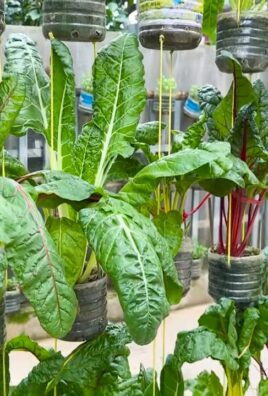
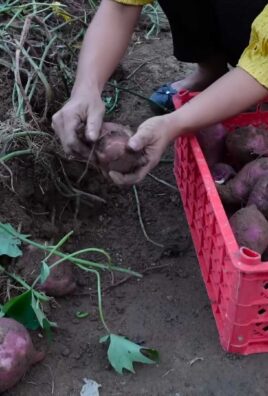
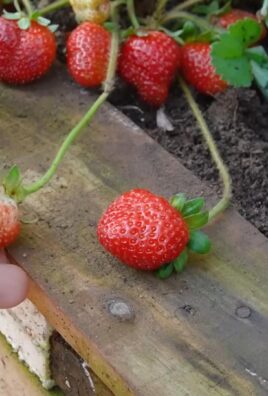
Leave a Comment